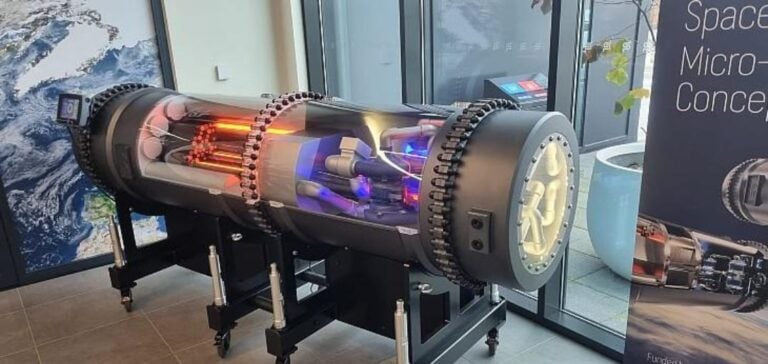Rolls-Royce has received GBP 4.8 million in funding from the UK Space Agency as part of the National Space Innovation Programme (NSIP).
This program aims to invest in high-potential technologies, stimulate innovation and encourage growth in the UK.
Rolls-Royce’s micro-space reactor project, in collaboration with the University of Oxford and Bangor University, focuses on the development of the complete micro-reactor design, its underlying capabilities and the key technologies required.
Jake Thompson, Director of Novel Nuclear & Special Projects at Rolls-Royce, says the funding represents a crucial milestone for the micro-reactor program.
He emphasizes the importance of this initiative for the future of space exploration, providing a reliable and flexible power source for a variety of missions.
Perspectives and Impact on Space Exploration
Rolls-Royce’s micro-space reactor could transform space operations by providing a constant and reliable source of power for missions.
Paul Bate, CEO of the UK Space Agency, explains that the NSIP aims to stimulate growth, create quality jobs and protect our planet while supporting innovation in the UK.
He adds that projects like Rolls-Royce’s are essential to achieving these goals.
The Rolls-Royce program, at a total cost of GBP 9.1 million, aims to advance the technological readiness of the microjet, bringing it closer to a space flight demonstration.
This project follows earlier funding of GBP 1.18 million in April this year and GBP 2.9 million in 2023, to develop an initial concept for a lunar modular jet engine.
Technology and Collaboration
Collaboration with academic institutions such as the University of Oxford and Bangor University plays a crucial role in the development of this micro-reactor.
These partnerships make it possible to explore new technological avenues and ensure that the solutions developed are at the cutting edge of innovation.
Work will cover the entire design of the micro-reactor system, focusing on underlying capabilities and key technologies.
This project is part of a series of initiatives to position the UK as a leader in nuclear power for space exploration.
The progress made with this funding could pave the way for more ambitious and sustainable space missions, strengthening the UK’s position on the world stage.
Rolls-Royce’s vision is to provide reliable and flexible power for a wide range of space missions, contributing to the expansion of human exploration in space.
This initiative also demonstrates the UK’s ability to innovate and actively participate in the development of cutting-edge technologies in the space sector.
The UK Space Agency continues to support innovative projects that have the potential to transform the space industry and generate significant benefits for society.
By investing in technologies such as the Rolls-Royce micro-reactor, the UK is preparing to meet the challenges of future space exploration.
With these technological advances and strategic collaborations, the UK is positioning itself as a key player in the field of nuclear power for space exploration, opening up new possibilities for future missions.






















